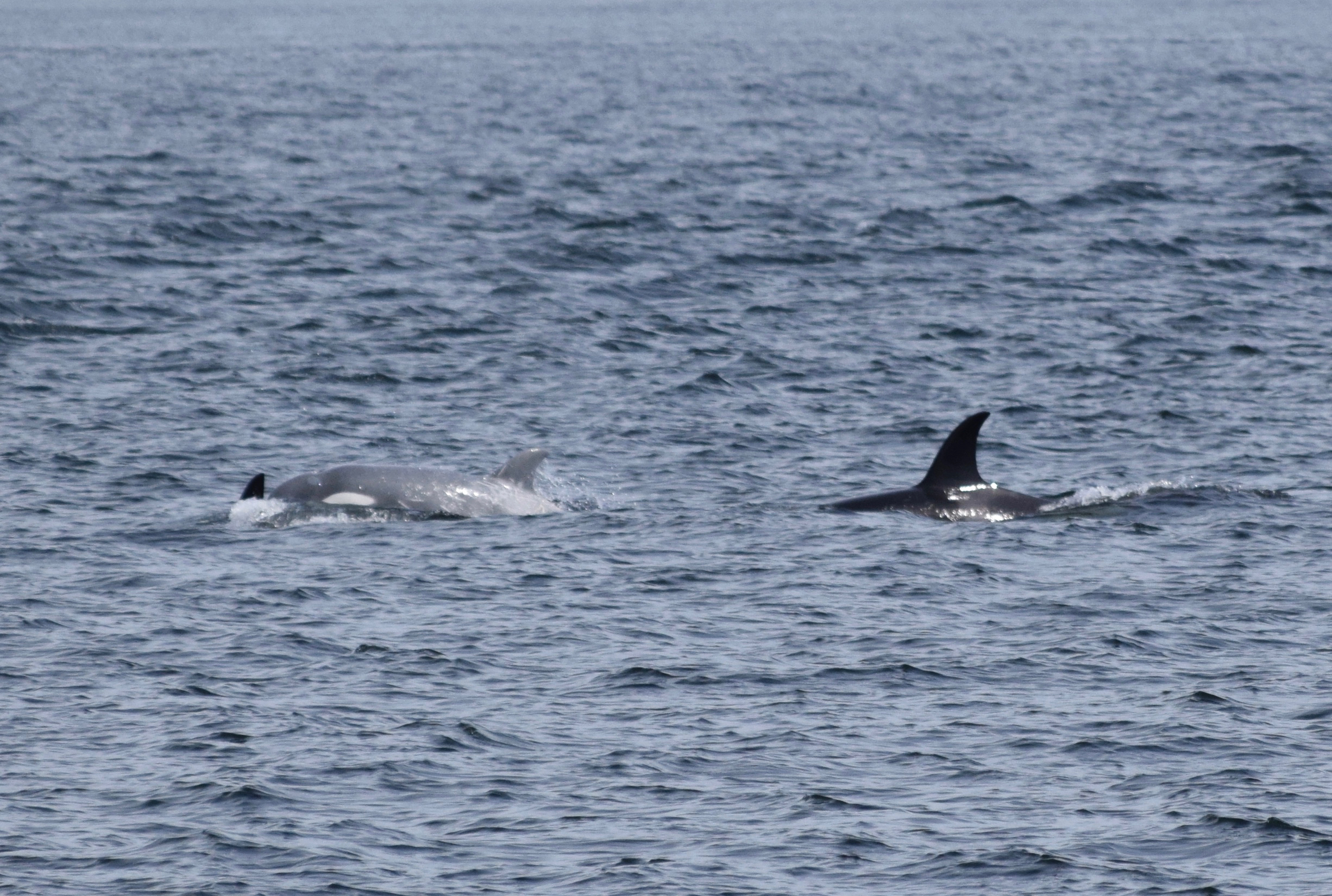Tl’uk The White W’orca
Forget white walkers, it’s all about this white w’orca -Tl’uk! This juvenile killer whale, first spotted in late November 2018, is part of the T046B pod. This family pod is often seen in and around the waters of Vancouver Island. The young’s mother is T046B1 which makes his name T046B1B…. not very catchy I know hence the nick name Tl’uk. Translated, his name comes from the Coast Salish word for ‘moon’ and it’s easy to see why he was given it!

So why is this little orca a different colour to the rest of his family?
Well, he is not an albino as his eyes are not pale or reddish. Scientists aren’t actually 100% sure on why Tl’uk is this ghostly greyish-white colour. The white orca could have one of a possible three current running theories: leucism which is where an animal partially loses its colour pigmentation in skin, hair, feathers, scales or cuticles, but not the eyes. A second theory is Chédiak-Higashi Syndrome, this affects the immune system and therefor the animal’s longevity. The final idea is that Tl’uk could just grow into his natural black and white colour as he grows older – perhaps mum had just run out of black ink at the time of birth!
Have there been others like Tl’uk?
Tl’uk is not the first ghostly orca to have been spotted in British Columbia, in 2009 a pale transient orca calf was spotted but sadly died soon after.
In the early 1970s, a female orca named Chimo who was held in captivity, was documented to have suffered from Chédiak-Higashi Syndrome. Chimo passed of pneumonia at age 4.
In 2010 a white male orca nicknamed ‘Iceberg’ was spotted off Russia’s Kamchatka Peninsula, at this time he was believed to be 16 years of age. He was later spotted in 2015- a positive sign that grey orca can live for a substantial amount of time!
Captains thoughts
Since being spotted in November 2018 the crew at SpringTide have been lucky enough to see Tl’uk many times. Most recently Captain Ian saw Tl’uk on the 28th December 2019, while out on one of our winter wildlife zodiac tours. Captain Ian, who spends a lot of time on the water with these magnificent creatures, had some interesting observations about this little guy.
“I’ve noticed that Tl’uk seems to swim a bit differently than the other orca I have seen out in the wild. When he breaks the surface he seems to have a lot more water coming out with him than the smooth surfacing of the adults.” Captain Ian told me.
“He breaks the water in a very similar way to a harbour porpoise- he pushes the water out the way with his head rather than gliding through it smoothly to catch a breath.”
Perhaps another clue or symptom of Tl’uk’s grey colour?
So, it seems that if you’re out in the waters these transient killer whales call home be sure to keep your eyes peeled for a little grey shape that’s splashing around a bit differently from the other orca. We hope that Tl’uk will live for a long time yet and it does help that he is part of a transient orca pod. The transient orca feed on other marine mammals such as seals and sea lions- which luckily are in a high abundance around our shores! (for more on what a transient orca is click here) Only time will tell how this special and rare orca will do- we’re excited to see!
Izzy David
Onboard Naturalist/Biologist for SpringTide Whale Watching & Eco Tours

